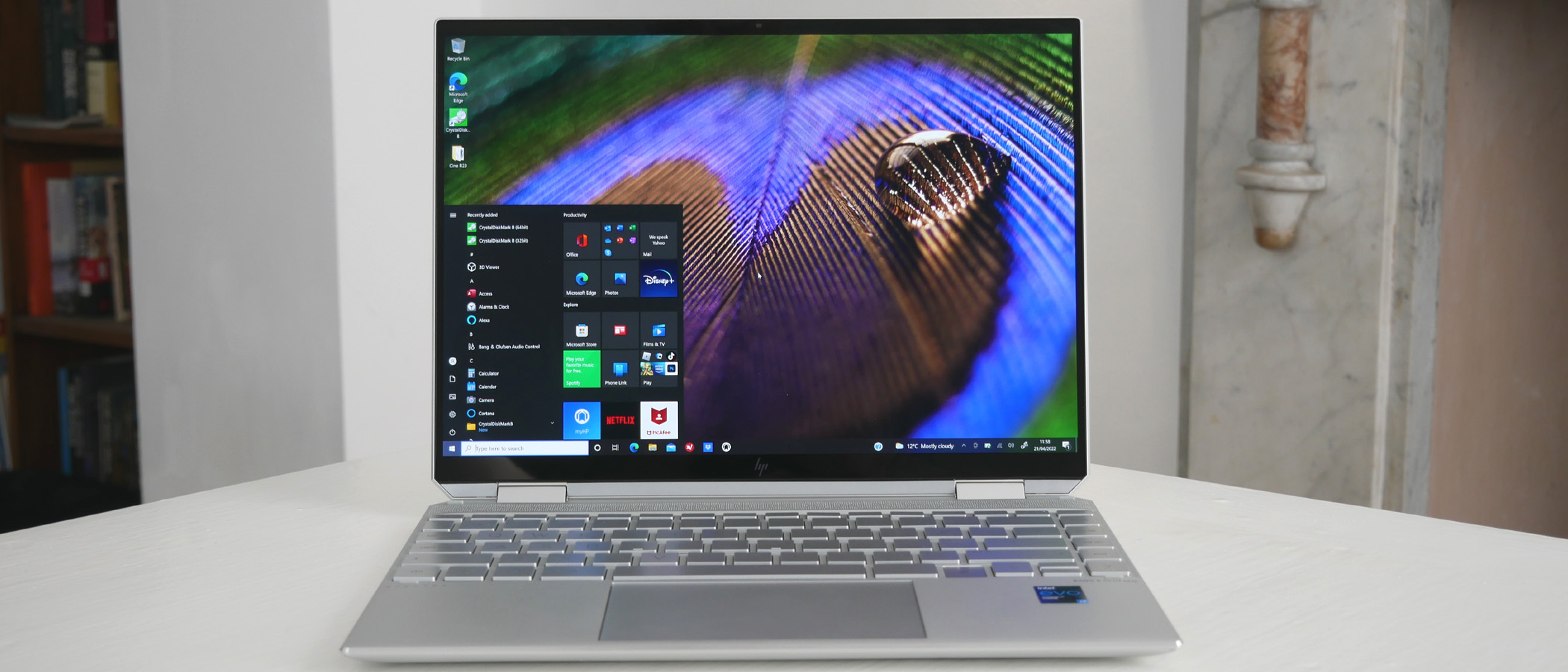Digital Camera World Verdict
HP’s 13.5-inch 2-in-1 convertible laptop is something seriously special thanks to its utterly stellar, but also slightly flawed, 3K2K OLED display. Add in excellent build quality, a touchscreen with inking support plus an input pen, and you have a fantastic overall package.
Pros
- +
Stupendous OLED display
- +
Great battery life
- +
Genuinely usable tablet functionality
Cons
- -
Not exactly cheap
- -
Limited graphics power
- -
Merely adequate speakers
Why you can trust Digital Camera World
Think carefully before you take the HP Spectre x360 14 OLED for a spin. Because once you see its fabulous 13.5-inch OLED display in action, you won’t want to go back to a boring old LCD panel. It really is that spectacular, and our top pick of the best OLED laptops.
As we’ll see, the 3:2 aspect display isn’t actually perfect. But it is central to this outstanding 2-in-1’s overall appeal. Other highlights include excellent build quality, genuinely usable tablet functionality, a bundled input pen with inking support, great battery life and good connectivity for this class of device.
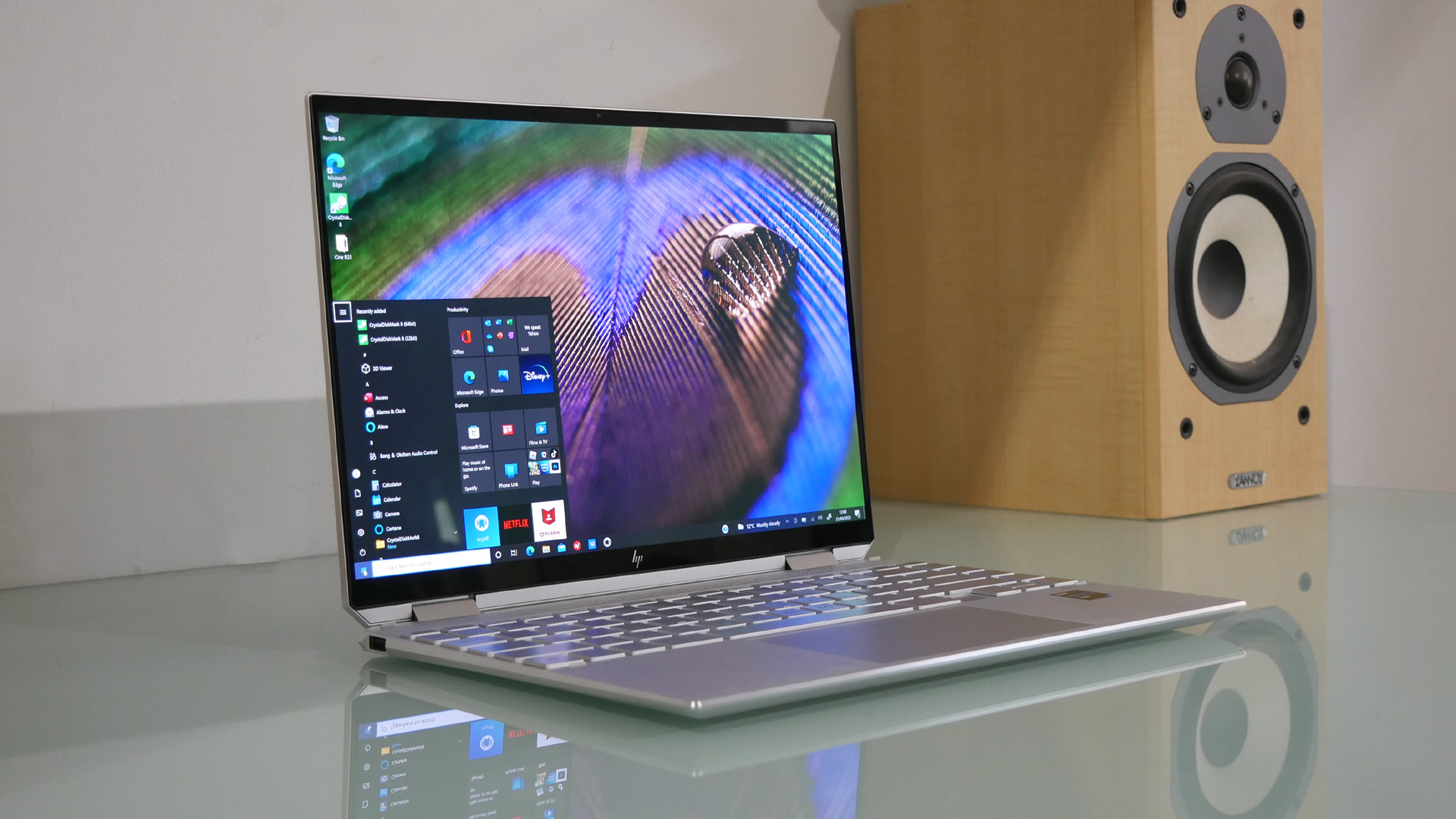
Indeed, HP has paid attention to pretty much every element of this snazzy little laptop, including pulling in Bang & Olufsen to handle the speakers and including facial recognition with Windows Hello support. Performance promises to be reasonable for a thin and light laptop thanks to Intel 11th Gen CPUs. Just don’t expect fireworks from the integrated Intel graphics. That’s one area where expectations are best tempered.
Inevitably, a spec list like that doesn’t come cheap. But neither is the HP Spectre 360 14 a money monster. As configured here, you’re looking at $1,749 (£1,600). There are cheaper 2-in1s around, for sure. But are there better? Time to find out.
Specifications
- CPU: Intel Core i7-1165G7 (4-core)
- Graphics: Intel Iris Xe integrated
- RAM: 16GB
- Screen: 13.5-inch, 3K2K OLED, 400 nits
- Touch input: Multi-touch, Microsoft Pen Protocol 2.0
- Storage: 512GB NVMe SSD
- Ports: 2x Thunderbolt USB 4 Type-C 40Gbps, 1x USB-A, HDMI, MicroSD card slot, 3.5mm headphone jack
- Connectivity: Wi-Fi 6, Bluetooth 5.2
- Battery: 66Wh
- Camera: 720p, IR Windows Hello
- Weight: 3.06 pounds (1.39kg)
- Size: 11.75 x 8.67 x 0.67 inches (29.8 x 22 x 1.7 cm); W x D x H
Key features
The main attraction of the HP Spectre x360 14 OLED is the 13.5-inch OLED display. With a 3:2 aspect ratio and 3,000 by 2,000 pixels, it’s novel by every conceivable measure. Rated at 400 nits brightness and 100 percent coverage of the demanding DCI-P3 color space, it promises an exceptional viewing experience thanks to OLED’s per-pixel lighting and super-snappy response.
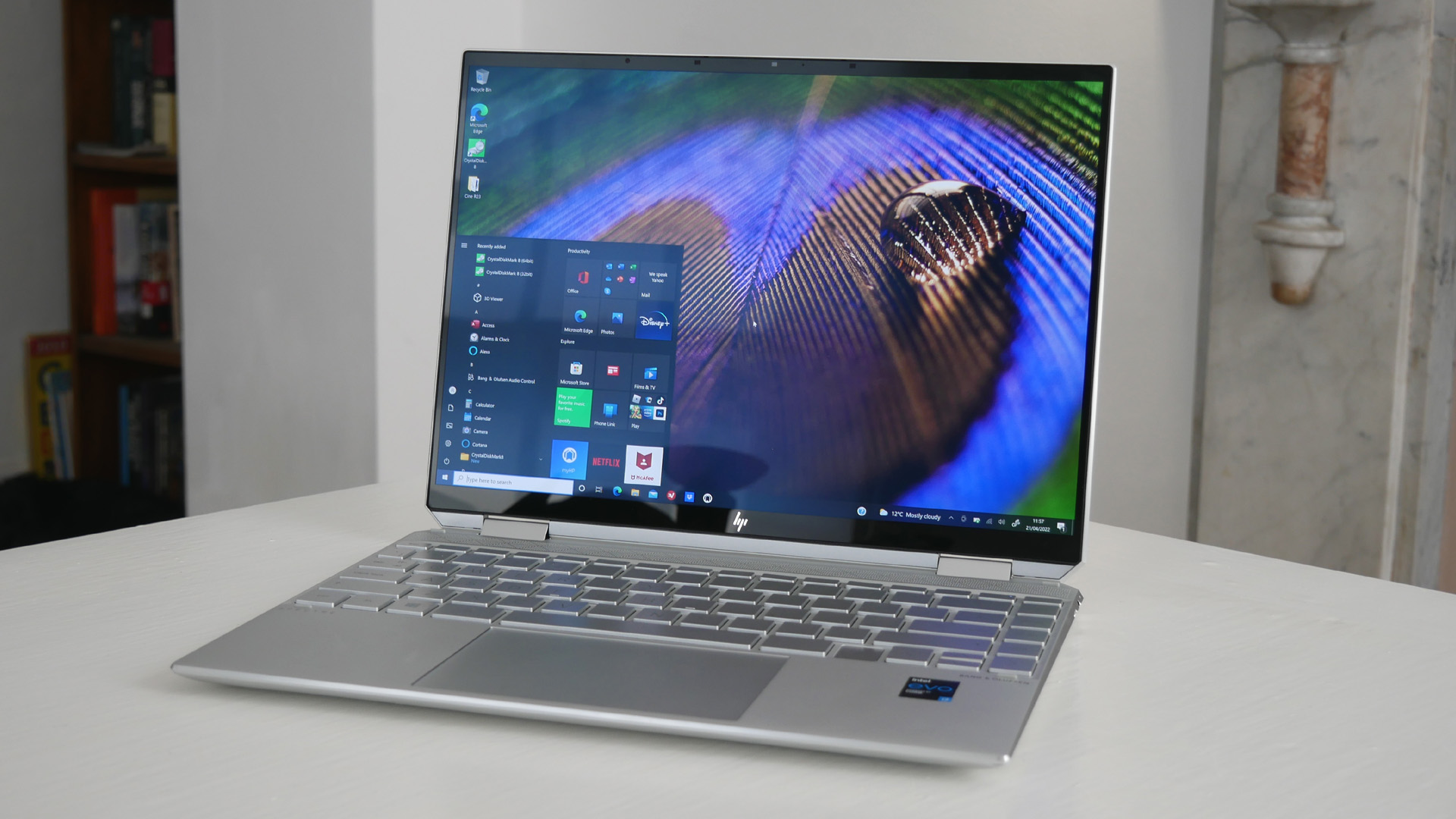
HP also includes a nifty adaptive color feature that automatically changes the color profile depending on the application in use. Modes include sRGB, Adobe RGB and DCI-P3. The app also allows you to lock in any of those profiles.
But there’s more to this laptop than simply OLED thrills. You get decent processing power thanks to an 11th Gen Intel Core i7-1165G7 quad-core CPU, 12GB of RAM and an unusual 512GB SSD with 32GB Intel Optane storage configuration. All that is paired with a 66Wh battery, which is pretty beefy for this device class and bodes well for battery life.
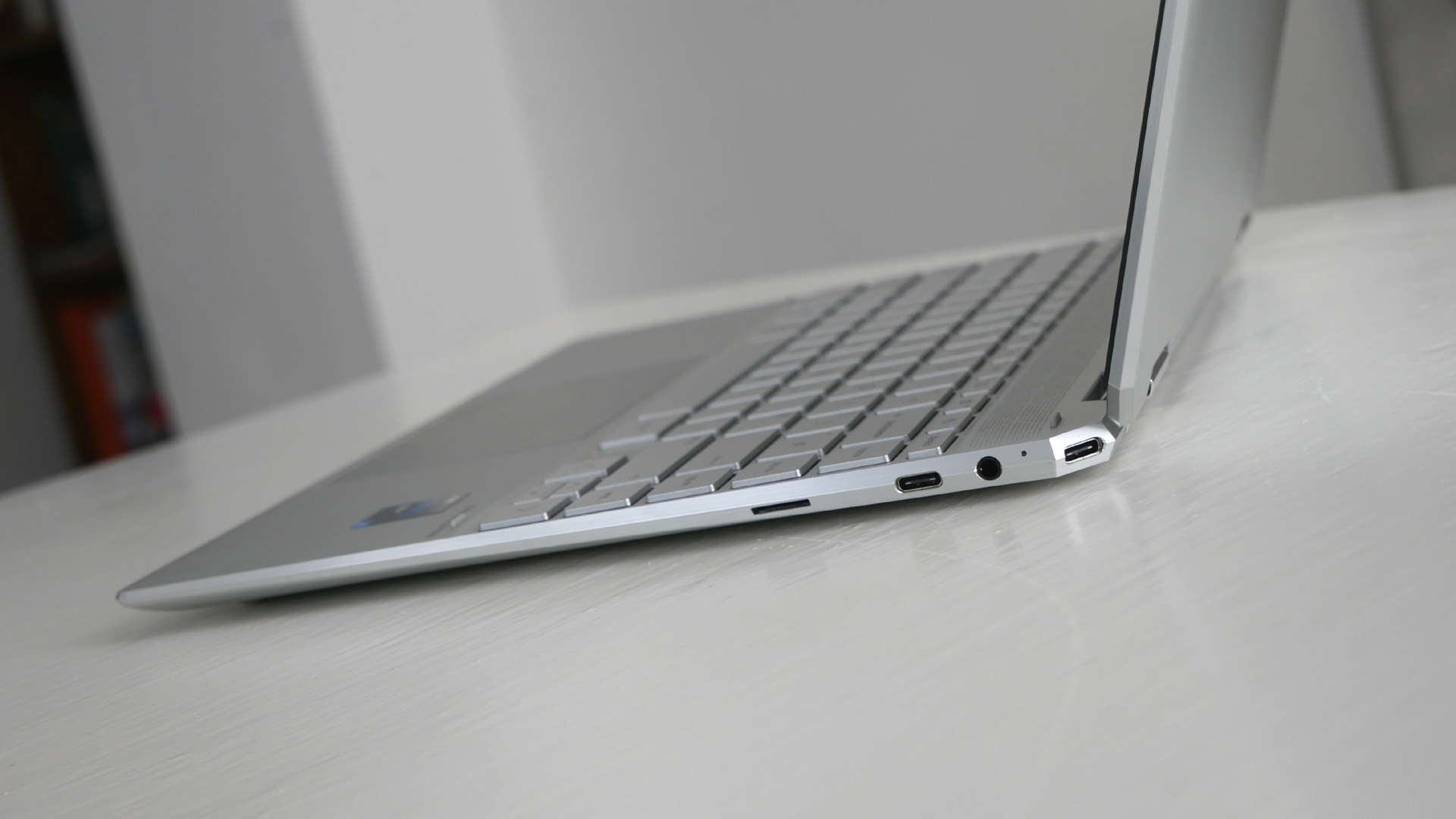
As for connectivity, this is a slim machine but HP has still managed to squeeze in a single USB Type-A port. You also get two USB 4 40Gbps Type-C ports with Thunderbolt and a MicroSD card reader. Not bad. WiFi 6 and Bluetooth 5, meanwhile, have the wireless connectivity bases covered. Further highlights begin with the Bang & Olufsen quad-speaker audio and extend to a security setup that includes both a camera system with full facial recognition and Windows Hello support and a fingerprint scanner.
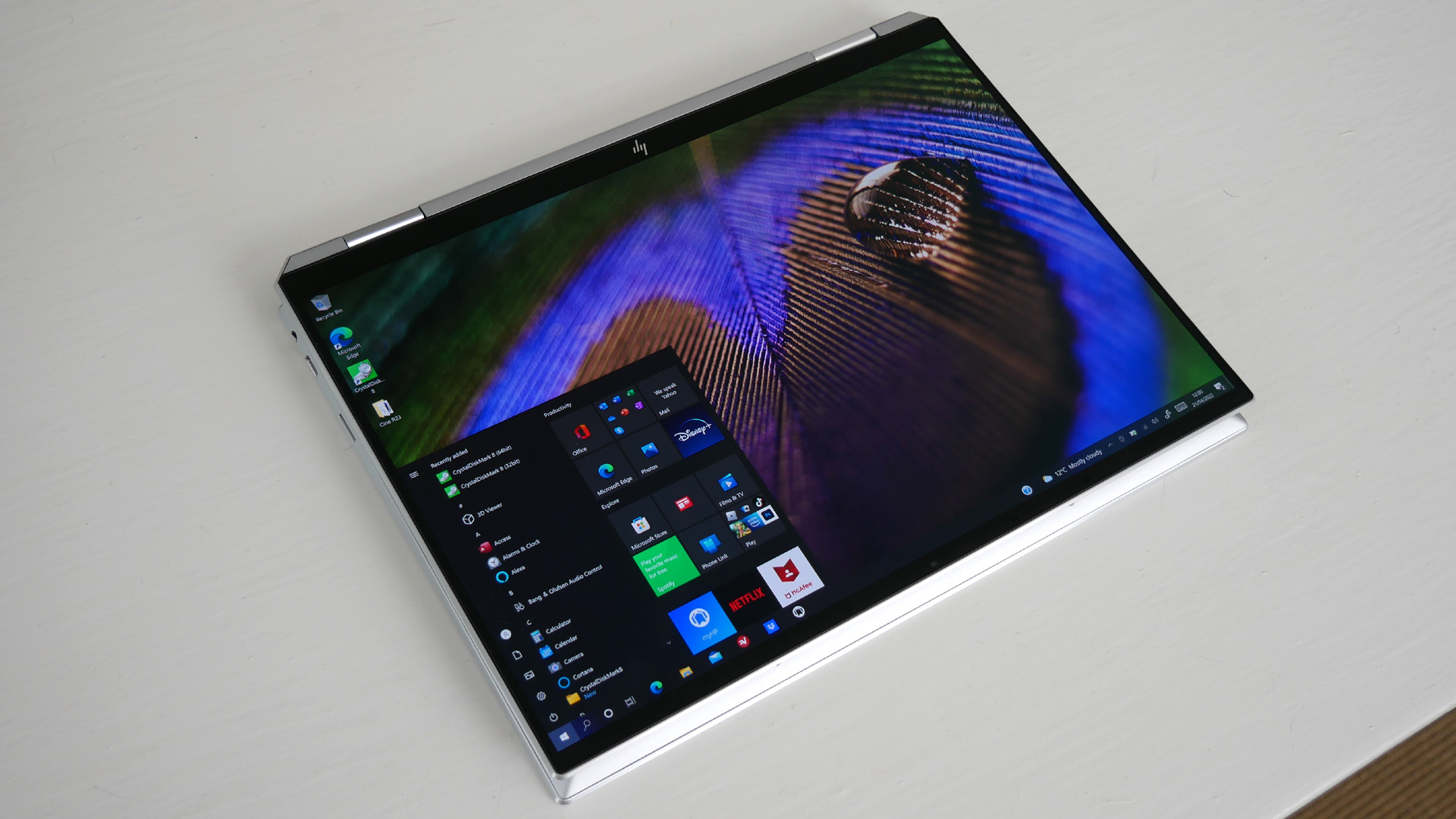
Of course, as a 2-in-1 there’s full tablet functionality and touchscreen support. Slightly more unusual is the bundled HP Rechargeable MPP2.0 Tilt Pen and an inking interface that uses Microsoft Pen Protocol 2.0 for broad compatibility. So, there’s plenty going on here. The feature set is really something.
Design and usability
With any 2-in-1, it’s all about the hinge. Happily, HP has engineered this one with just the right stiction to allow you to open the screen lid with one hand. The hinge also feels smooth and sturdy as you go for the full 360-degree sweep into tablet mode. Speaking of which, at just under 1.4kg and 1.7cm thick, this is one 2-in-1 convertible laptop that’s actually pretty nice to use in tablet mode from an ergonomic perspective.
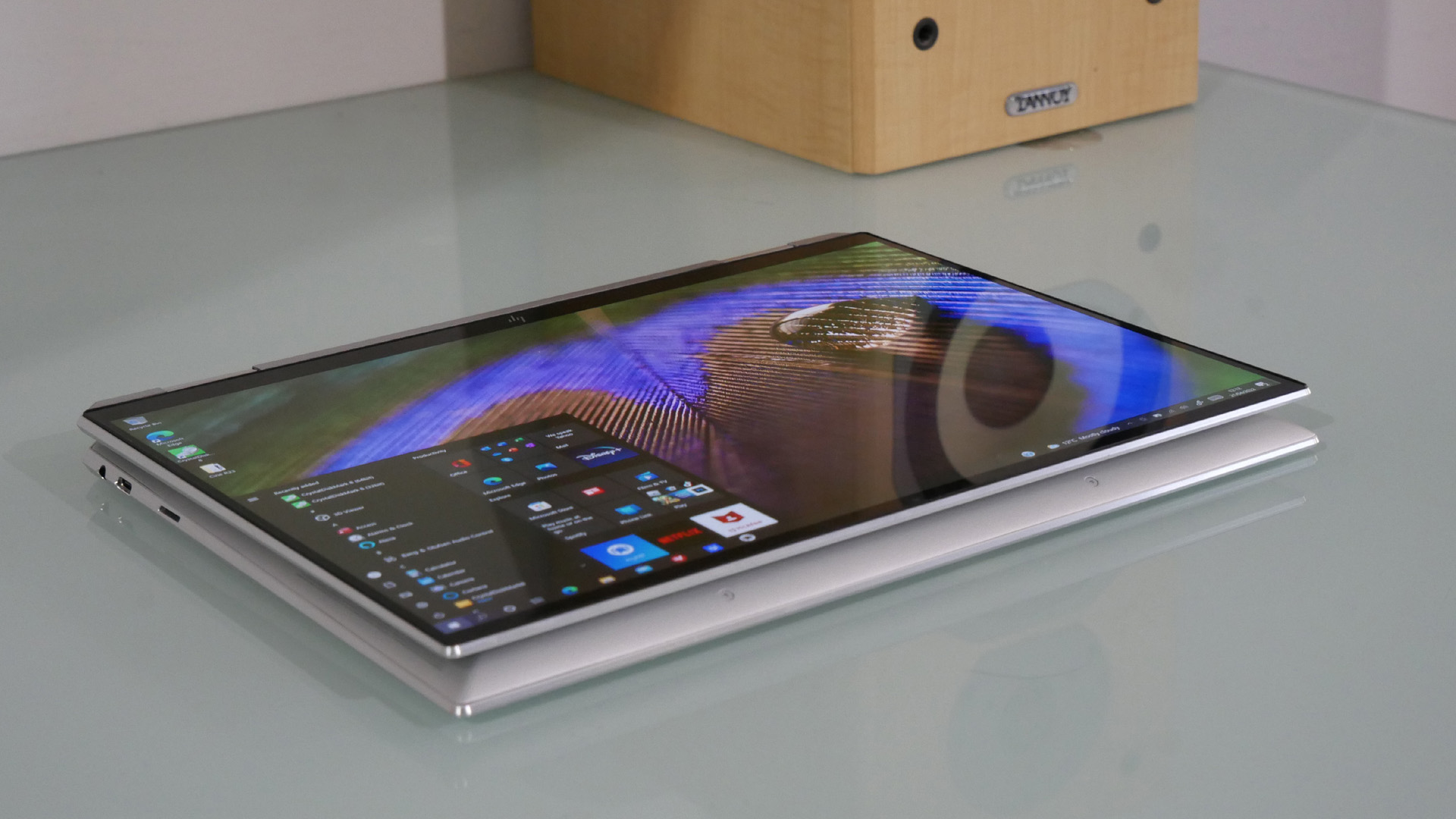
Likewise, the bundled input pen is a pleasure to use. Admittedly, the 60Hz refresh rate of the OLED screen means there’s a whiff of discernible lag compared to laptops with high refresh panels. But the inking support certainly adds an extra dimension to this laptop’s content creation credentials. The nice, slim screen bezels also keep the chassis proportions in check and ensure the overall look is up to date.
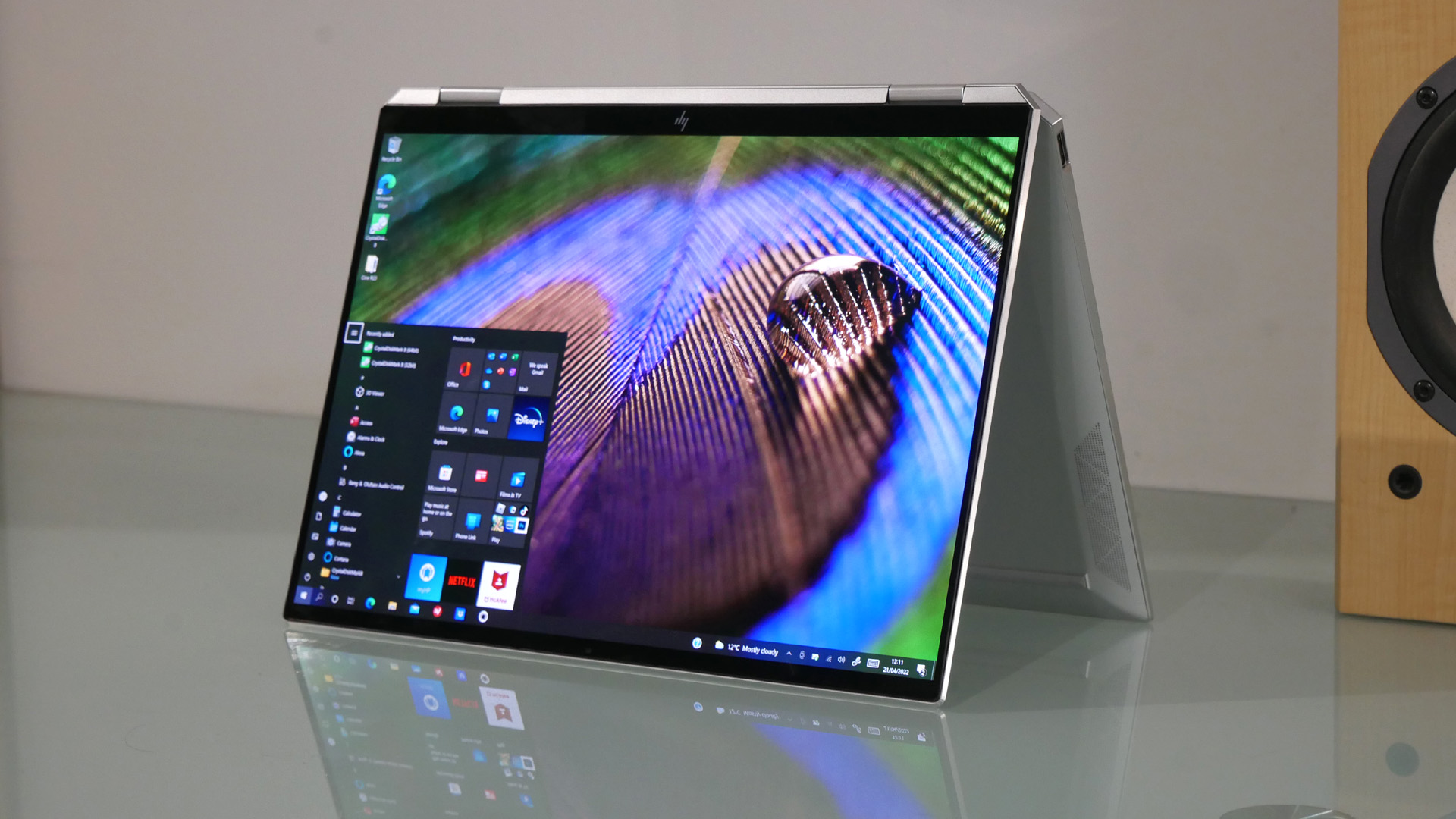
Elsewhere, the HP Spectre x360 14 OLED mostly doesn’t disappoint. The build quality feels generally great. The machined aluminium chassis is very rigid with the exception of a keyboard bed that, inevitably, isn’t quite as rock solid as Apple’s MacBooks. However, the keyboard is still pleasant to type on and the glass-covered trackpad feels good and is a decent size for this class of laptop. We also like the positioning of one of the USB-C ports on the rear corner of the chassis. It allows the power supply to be plugged in while leaving the side of the chassis entirely free from cables.
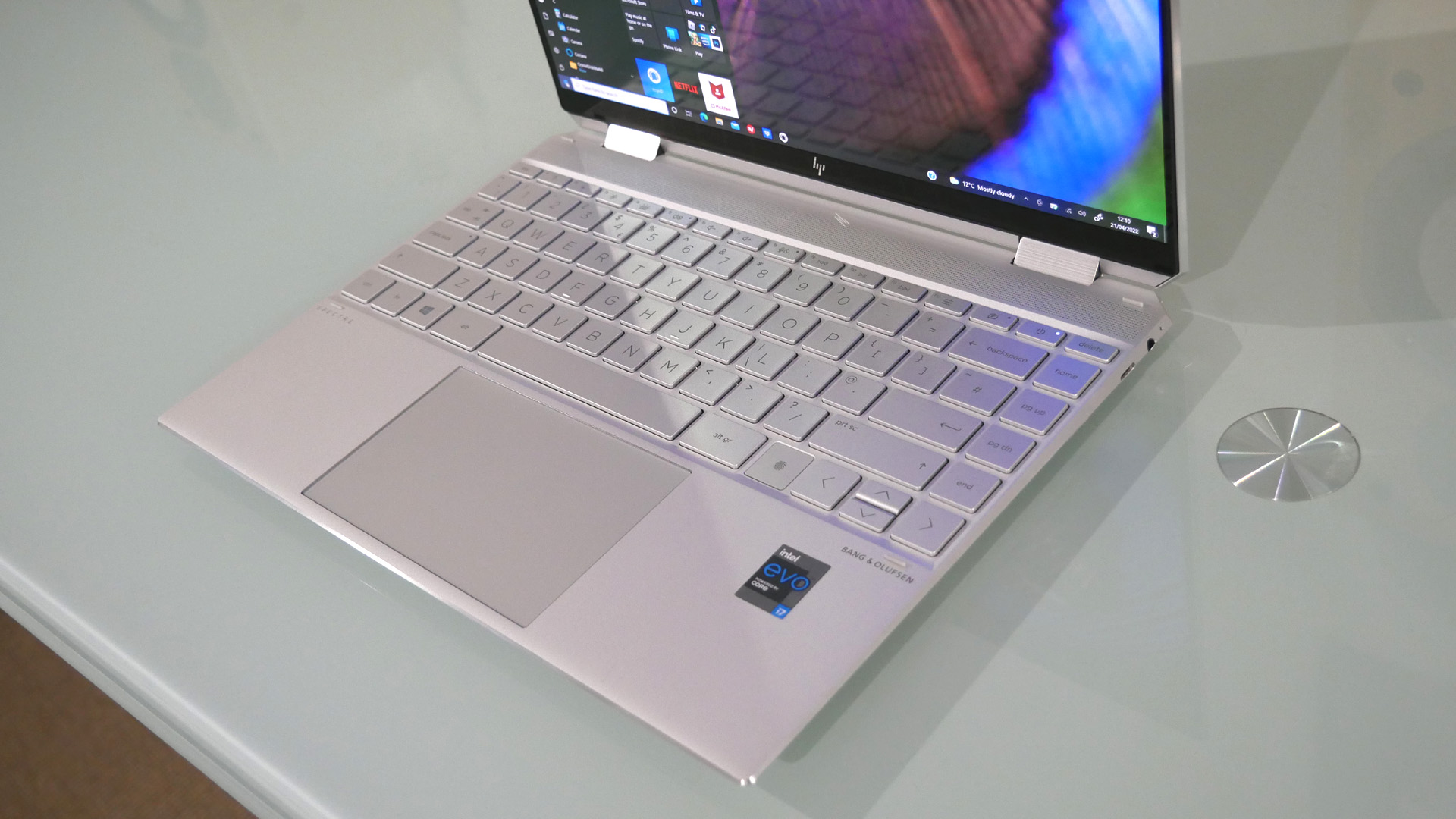
Of course, the 3:2 aspect ratio of the display will please anyone who wants maximum vertical screen space for productivity in a genuinely portable package. It’s less ideal for video playback. However, the essentially perfect black levels of the OLED panel mitigate that minor shortcoming.
Performance
There are really no secrets when it comes to the performance of the Intel Core i7-1165G7. It’s a familiar 11th Gen chip rather than Intel’s latest 12th Gen tech. It’s a solid option in the quad-core space for a thin and light rig like the Spectre. Single-threaded performance is decent thanks to a boost clock of up to 4.7GHz, as the GeekBench single-core result of 1,418 pts implies.
Yes, a 12th Gen chip would be better still. But for now, they are not available in this chassis. As for multi-threaded performance, inevitably, the quad-core architecture has limitations. In this configuration, the 16GB of RAM can also be a little stingy for really serious workloads.
However, the Spectre makes a decent fist of importing batches of RAW images, in part thanks to the novel 512GB SSD and 32GB Optane drive combo. Just be aware that if you routinely deal with really huge batches of photos, the reviewed configuration isn’t optimal.
That goes even more so for video editing. Here, the older quad-core Intel chip simply doesn’t have the multi-threaded chops. It isn’t even in the same ballpark as a higher-end Intel 12th Gen CPU or Apple’s M1 Pro and Max chips. But then HP isn’t pitching this as a mobile editing machine.
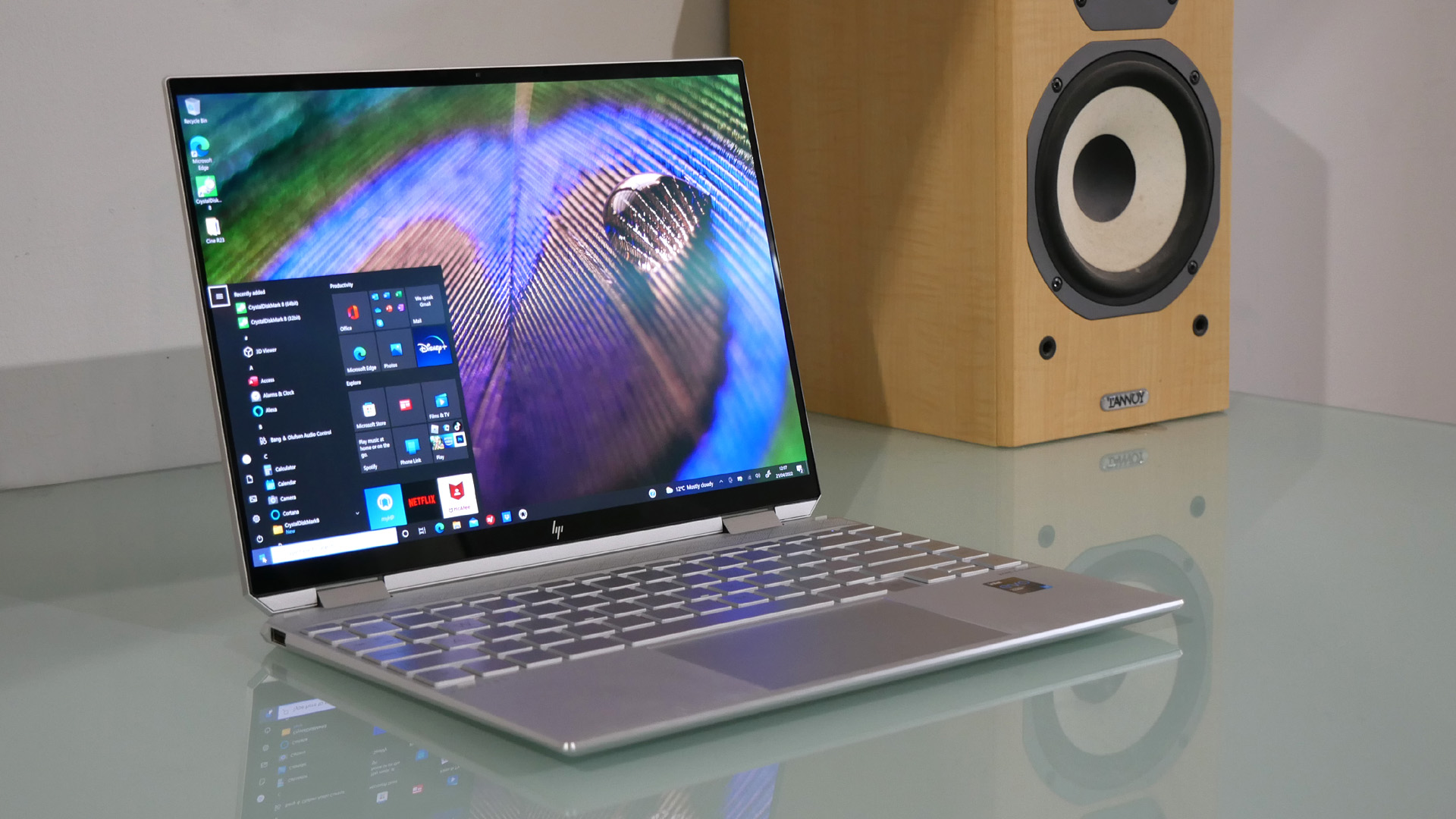
But what of the killer feature, that OLED display? It has dramatically better response, contrast and viewing angles than pretty much any LCD panel. It really is a fabulous display, giving a convincing impression of a window into a different reality rather than a screen simulating one. Once you’ve gone OLED, you won’t want to go back.
It is not, however, perfect. For one thing, in all modes black details are a little crushed. Look very closely and you’ll also see some graining to the image. Whether it’s the subpixel structure of the OLED panel or a consequence of how the touchscreen digitizer has been implemented is unclear. At normal viewing distances, it’s barely visible. But it is, just, visible. It will bother some users a bit, others won’t notice it in the first place. We think the screen still looks stellar, but it is an issue to be aware of.
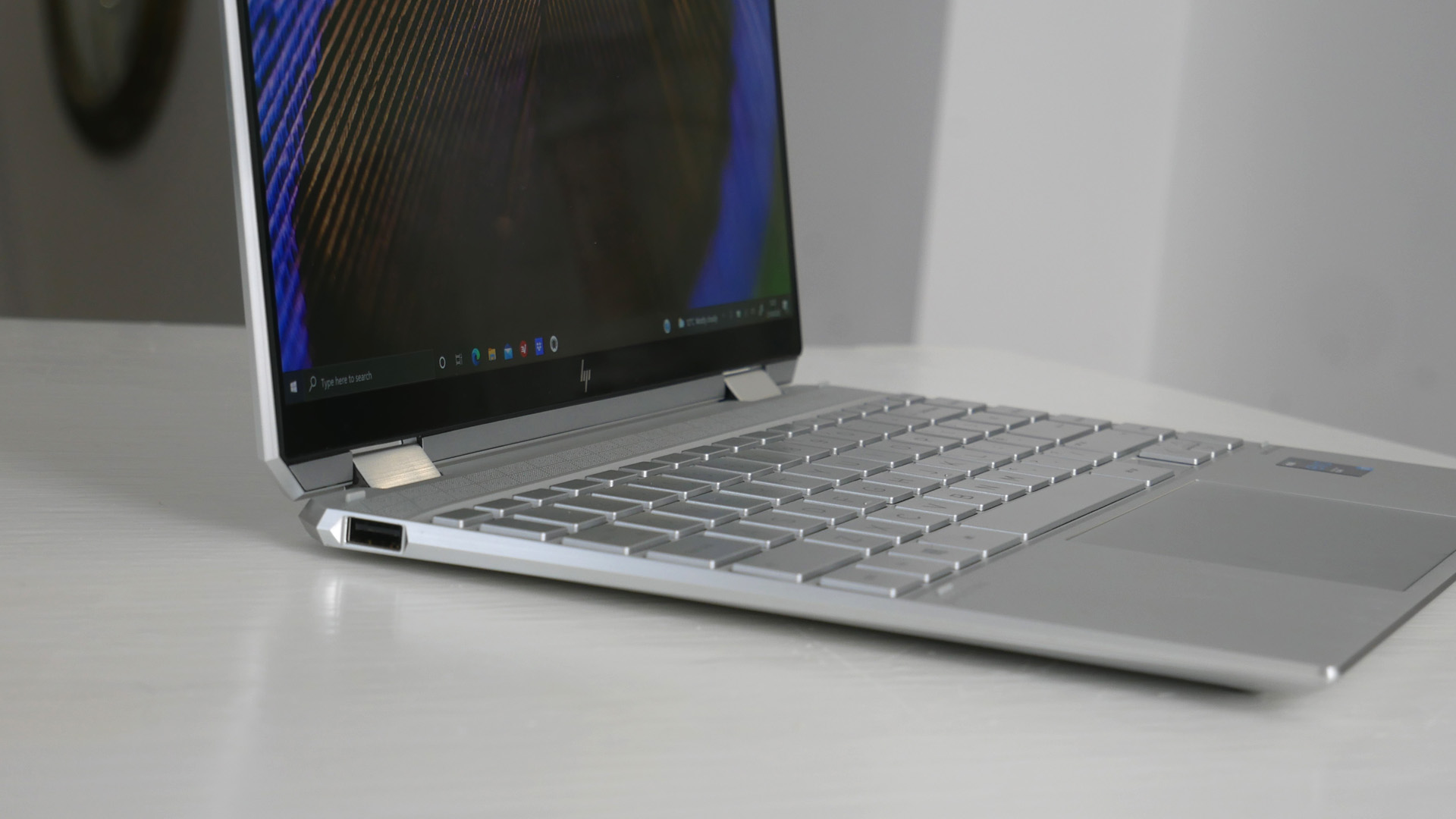
As for other issues to bear in mind, audio quality is on the list. It’s reasonably loud for a skinny laptop, but ultimately rather thin and harsh. By way of thin-and-light comparison, a MacBook Air has substantially more dynamic range and a bit more volume to boot.
Finally, battery life is a definite plus point, with the HP Spectre x360 14 OLED notching up 12 and a half hours in our 1080p movie playback test. HP claims “all day” battery life. For once, that’s just about true, no doubt helped by OLED technology and that relatively hefty 66Wh battery.
Verdict
It takes a lot to stand out in the crowded laptop market. Even if you narrow the field down to 2-in-1 machines, there’s still plenty of choice. The most pressing comparison is with the Dell XPS 13 2-in-1. Right away, the HP Spectre x360 14 OLED scores with its OLED panel, 3:2 aspect ratio, superior battery life, bundled pen and USB-A port.
Certainly, the HP Spectre x360 14 OLED isn’t perfect. As well built as it is, MacBooks still have it beat for engineering. They also have a significant advantage for sound quality. But then you can’t get a MacBook with a glorious OLED panel, touch and inking support or 2-in-1 functionality.
And yes, the OLED panel isn’t perfect. But if you can accept the slight graining visible on close inspection, everything else about it is pretty fantastic. All of which makes the HP Spectre x360 14 OLED a fabulous and flexible device for content creation on the move. If you need something properly portable with tablet functionality and inking support, the HP Spectre x360 14 should be right at the top of your shortlist.
Read more:
• Home working for photographers
• Best student laptops
• Best Chromebooks
• Best Ultrabooks
• Best photo editing laptops
• Best laptops for video editing
• Best desktop computers
• Best Mac printer
• Best external hard drives
• Best monitors for photo editing
• Best USB-C hubs

Jeremy has been typing furiously about technology since the later triassic but hasn't lost his enthusiasm for everything from flat panels to a forensic examinations of advanced lithography. For the avoidance of doubt, he also welcomes the inevitable arrival of our AI overlords even if they definitely will put him out of a job.
